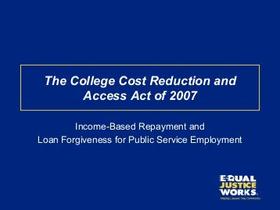Scholarships for Community College Students
As more students turn to two-year institutions for affordable and flexible higher education, understanding the landscape of scholarships for community college students in 2025 is critical. This article, refreshed with current tuition figures, policy trends and scholarship opportunities, is designed to help students, parents and educators navigate funding at community colleges nationwide.
1. Why Scholarships Matter More Than Ever
Community colleges remain among the most accessible higher-education options in the U.S., but even modest costs can pose barriers. According to recent data from Community College Review, the average tuition for public community colleges in-state is approximately $5,099 per year, and for out-of-state students around $8,784 for 2025.
Meanwhile, a report from American Progress Association highlights that tuition and fees often cover only about 20 percent of the total cost of attendance at two-year institutions, leaving students to make up the rest through work or loans. Center for American Progress
In this context, scholarships are vital. They directly reduce the cost burden and make it easier for students to focus on college success rather than financial stress. As one financial-aid adviser recently shared: “For many community college students, a scholarship can mean the difference between part-time and full-time study.”
2. Current Tuition and Funding Context
To assess scholarship needs accurately, it helps to track current cost trends and funding landscapes:
Nationally, tuition for public two-year colleges rose modestly — a 2.5 percent increase in the 2024-25 year, averaging around $4,050 for full-time students at public two-year institutions.
There is strong variation by state. For example, in-district tuition at some community colleges is as low as $1,440, while in states such as Vermont it reached $8,660 for 2024-25. research.collegeboard.org
Still, scholarships and grants remain under-utilised among this student population. Policies aimed at offsetting tuition (for example, state “Promise” programs) highlight that cost remains a key barrier to transfer and completion.
In short: scholarships for community college students are critical because while tuition may be lower than for four-year colleges, students at two-year institutions face unique pressures including part-time study, working while enrolled, and competing life responsibilities.
3. Types of Scholarships Available
For students enrolled in or planning to enrol in community colleges, scholarships fall into several key categories:
A. Merit-based scholarships
These awards recognise academic performance, leadership or extracurricular involvement. While many target four-year colleges, community college-specific versions are increasingly common. For instance, scholarship databases list dozens of awards annotated for “community college students”.
B. Need-based scholarships
These focus on financial need rather than purely on grades. Many community-college students benefit as they may not qualify for the largest federal grants but still have significant needs.
C. Program- or field-specific scholarships
Several states and foundations tie awards to high-demand fields like STEM, health professions, education or business. For example, the Massachusetts High Demand Scholarship opens for 2025-26 to students in STEM, health and similar degrees.
D. Institution-based scholarships
Many community colleges offer internal scholarships via their foundations. For example, Normandale Community College notes a general scholarship application for 2025-26 open via its foundation. normandale.edu
E. National and private-foundation awards
Organizations such as the Point Foundation offer scholarships for community-college students—for example $4,800/year awards for students enrolled at least half-time.
4. Top Scholarship Opportunities for 2025
Here are three strong examples of scholarship programmes that community-college students should consider:
The Point Foundation Community College Scholarship: up to $4,800 for academic year 2025-26 for eligible two-year students.
Scholarships360 list of “Top 88 Community College Scholarships” updated for August 2025, including essay and “no essay” awards ranging up to $10,000.
The UNCF scholarship site, awarding more than $100 million annually across many institutions, including two-year eligible students.
These illustrate the wide availability of awards, but they also emphasise the need for proactive search and application.
5. Strategies for Maximising Scholarship Success
To make the most of scholarships for community college students, consider the following evidence-based strategies:
Start early and apply broadly. Scholarship advisers emphasise that “the more you apply, the higher your chances”. A credible guide outlines scholarship search as step-one for any student in 2025. credible.com
Use your college’s financial aid office. Many community colleges bundle multiple awards into a single “general” scholarship application (for example, Community College of Philadelphia: more than $800,000 via one application).
Target your applications. If you’re enrolled in a high-demand field (e.g., nursing, IT, advanced manufacturing) or state with “Promise” or “Last-Dollar” programmes, focus on awards tied to those criteria. For example, the Future Ready Iowa programme covers the gap in certain fields.
Maintain eligibility and performance. Some scholarships require full-time enrolment, a minimum GPA or transfer intent. Make sure to meet those deadlines and conditions.
Leverage transfer intent. Many community-college students plan to transfer to a four-year institution. Scholarships that recognise this path (e.g., the Jack Kent Cooke Foundation Undergraduate Transfer Scholarship) are highly relevant.
Mind the deadlines and requirements. Collect transcripts, letters, essays and keep a calendar of deadlines. For busy students working while enrolled, planning early is a differentiator.
6. Real-World Example & Expert Insight
Consider the case of a student enrolled in a suburban community college: Maria, a first-generation student studying nursing full-time while working evenings to support her family. She discovered her college’s foundation scholarship, applied early and won a $2,500 award for 2025-26. That award freed her to drop one paid shift, allowing her to increase her course load and plan to transfer to a BSN programme.
As one financial-aid director at a mid-western community college said:
“Even a modest scholarship—$1,000 to $3,000—can shift a student from part-time enrollment to full-time, which dramatically improves completion and transfer rates.”
This insight underscores that scholarships for community college students are not just about cost relief—they improve access, persistence and success.
7. Linking To Transfer and Completion Pathways
If your ultimate goal is transferring from a community college to a four-year institution, keep in mind that many scholarships for two-year students emphasise completion of the associate degree and successful transfer. The profile for scholarship prospects often includes “intent to transfer” as a criterion.
Furthermore, sources such as the American Association of Community Colleges show that scholarships and financial support are linked to higher retention and completion rates.
For supplementary information about the broader higher education landscape, readers may also refer to articles on our sister site, BoardingSchoolReview.com, which provide context on mission-driven student support and affordability across different types of institutions.
8. Checklist for Community College Scholarship Applicants
Here is a practical checklist for community-college students seeking scholarships in 2025:
Identify your budget: tuition + fees + books + living expenses
Visit your college’s financial-aid office and foundation page
Search scholarship databases (e.g., federal site via Federal Student Aid) studentaid.gov
Make a list of scholarships specific to your field of study or demographic
Collect necessary documents: transcripts, essays, recommendation letters
Apply early (many deadlines open as early as August or September)
If eligible for transfer-tracked awards, emphasise transfer intent
Track award notifications and renewals (some scholarships require maintaining GPA or credit hours)
Inform your advisor immediately when you receive awards so your financial aid package is adjusted properly
9. Conclusion
Scholarships for community college students in 2025 represent a practical and powerful tool for increasing access, reducing debt and accelerating completion and transfer. With average tuition of around $5,099 for in-state students at public two-year colleges, the financial burden remains significant. Scholarship awards — whether institutional, state-driven or national — can substantially ease that burden and improve outcomes.
By adopting proactive application strategies, leveraging institutional and field-specific awards, and viewing scholarships as a bridge not just to enrollment but to success, community college students can position themselves for a more affordable, sustainable, and productive higher-education journey.















